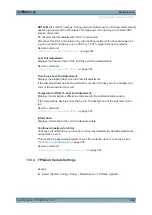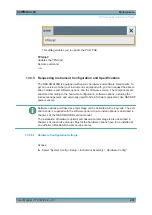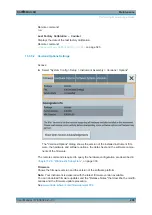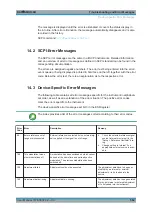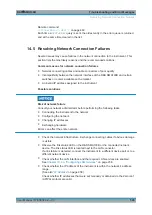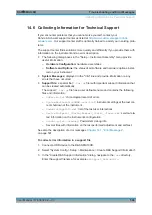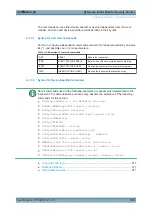
Reference Information for Remote Control
R&S
®
SMA100B
508
User Manual 1178.3834.02 ─ 03
Annex
A Reference Information for Remote Control
A.1 Additional Basics on Remote Control
This section provides basic information using the remote control.
A.1.1 Messages
The messages transferred on the data lines are divided into the following categories:
●
Interface messages
Interface messages are transmitted to the instrument on the data lines, with the
attention line being active (LOW). They are used to communicate between the con-
troller and the instrument. Interface messages can only be sent by instruments that
have GPIB bus functionality. For details see the sections for the required interface.
●
Instrument messages
Instrument messages are employed in the same way for all interfaces, if not indica-
ted otherwise in the description. Structure and syntax of the instrument messages
are described in
Chapter A.1.3, "SCPI Command Structure"
on page 509. A
detailed description of all messages available for the instrument is provided in the
chapter "Remote Control Commands".
There are different types of instrument messages, depending on the direction they
are sent:
–
Commands
–
Instrument responses
Commands
Commands (program messages) are messages the controller sends to the instrument.
They operate the instrument functions and request information. The commands are
subdivided according to two criteria:
●
According to the effect they have on the instrument:
–
Setting commands
cause instrument settings such as a reset of the instru-
ment or setting the frequency.
–
Queries
cause data to be provided for remote control, e.g. for identification of
the instrument or polling a parameter value. Queries are formed by directly
appending a question mark to the command header.
●
According to their definition in standards:
–
Common commands
: their function and syntax are precisely defined in stan-
dard IEEE 488.2. They are employed identically on all instruments (if imple-
mented). They refer to functions such as management of the standardized sta-
tus registers, reset and self-test.
Additional Basics on Remote Control



